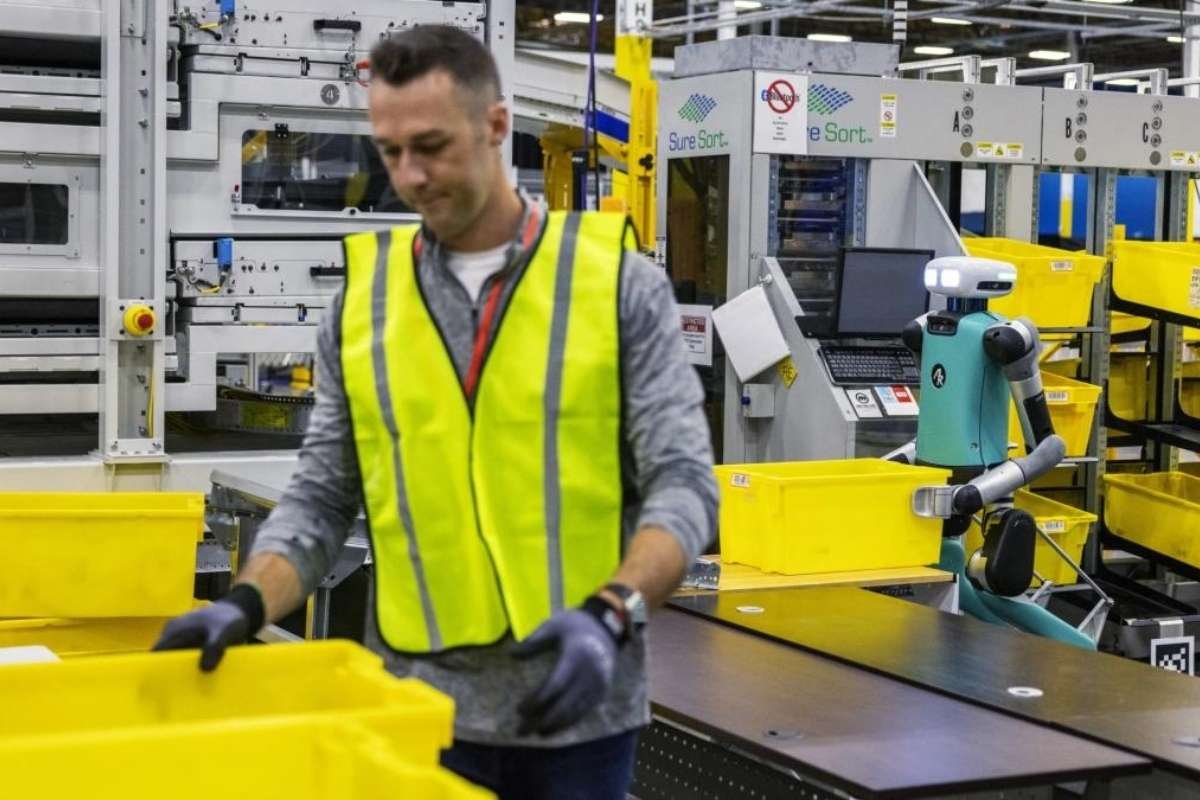Amazon announced on Wednesday, June 4, that it is expanding its artificial intelligence (AI) efforts across multiple domains, with a strong focus on robotics, amazon AI delivery logistics, and supply chain management. In a LinkedIn post, the company outlined how its latest AI advancements aim to bring more autonomy and intelligence to its operational infrastructure.
A key initiative involves Amazon’s “agentic AI” team, a newly formed group under Lab126, the same research and development unit behind devices like the Kindle and Echo. This team is working on building an AI foundation model that will enable Amazon robots, such as the warehouse bot Proteus, to comprehend and respond to natural language commands. The goal is to allow robots to process human instructions, reason through them, and take action independently, significantly enhancing automation in warehouse environments.
Generative AI to Improve Deliveries and Driver Navigation
Another major AI project, dubbed Wellspring, targets improvements in last-mile delivery, a critical stage in amazon AI delivery logistics chain. According to Amazon, this generative AI initiative will enhance the precision of deliveries and improve the overall experience for drivers. The system is expected to aid navigation in difficult locations such as office complexes, apartment buildings, and large residential areas traditionally problematic areas for delivery drivers.
In addition to route optimization, AI will also be used to generate more detailed and intuitive delivery maps. According to a report, these AI-generated maps will help drivers navigate complex delivery environments more efficiently and with greater accuracy. This move reflects Amazon’s broader ambition to leverage AI not just for automation, but for on-the-ground operational improvements that impact end-user satisfaction.
AI Powers Smarter Supply Chains and Customer Forecasting
Amazon is also enhancing its supply chain capabilities through a new AI foundation model that supports its Supply Chain Optimization Technology (SCOT). The model is designed to process and analyze over 400 million products across 270 timeframes. By doing so, it refines how inventory is forecasted, positioned, and priced, ultimately improving selection and convenience for customers.
Beyond inventory management, Amazon is now incorporating AI to anticipate customer demand based on variables such as pricing trends, weather conditions, and sales data. This predictive approach aims to make the company’s vast logistics network more agile and responsive to real-world factors that influence buying behavior.
These new developments are part of Amazon’s continued investment in AI innovation. Earlier this year, the company launched Nova Act, an AI agent capable of browsing the internet and making purchases autonomously. In late 2023, Amazon Web Services introduced the Generative AI Partner Alliance to help clients deploy AI systems, while Amazon Ads unveiled tools to create cross-media content using generative AI.
Together, these AI-driven advancements mark a significant shift in how Amazon approaches automation, amazon AI delivery logistics, and customer engagement, placing artificial intelligence at the core of its operational and commercial strategy.
Read Also: How Artificial Intelligence is revolutionizing Personalized Medicine?










